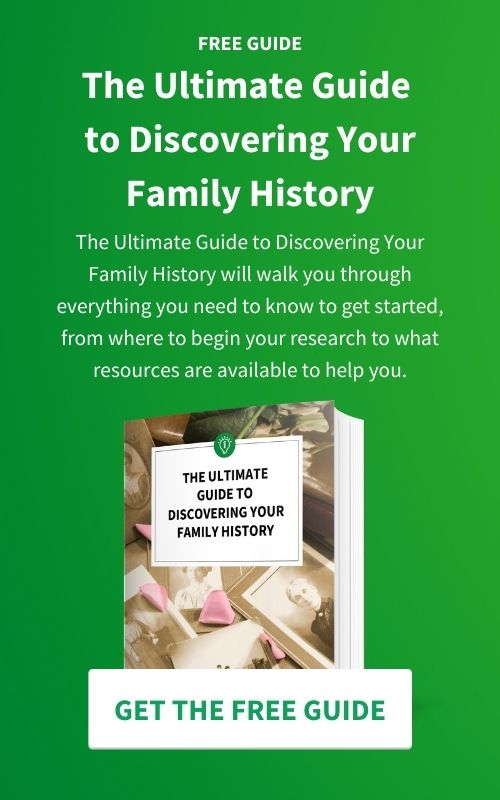7 Creative Ways to Document and Share Your Ancestry Research
Documenting and sharing ancestry research is incredibly important for preserving family history and engaging loved ones for several reasons.
Family history is a valuable and unique aspect of our personal and collective identity. By documenting and sharing our ancestry research, we can ensure that future generations have a better understanding of their roots and family heritage.
We know family history research often requires significant time, effort, and resources to compile, and much of this research can be lost if it is not documented and shared. By sharing our ancestry research with others, we can help prevent the loss of valuable information and ensure that our hard work is not wasted.
Documenting and sharing ancestry research can help engage loved ones and foster a sense of connection and community within our families. By sharing stories, photos, and other historical documents, we can create a more comprehensive and meaningful understanding of our family's past, and encourage our loved ones to become more invested in our shared family history.
Creating a Family Tree with a Twist
Traditionally, family trees are images of a hierarchical diagram showing the direct line of descent from one's ancestors. By adding creative elements, such as visuals, colours, and unique layouts, you can enhance the traditional family tree and create a more dynamic and visually appealing representation of your family history. Here are some ideas to get you started:
Visuals:
Adding visual elements to your family tree can make it more engaging and memorable. Consider including photos of your ancestors, or even illustrations or sketches of the places and times in which they lived. You could also incorporate other types of visual information, such as maps or timelines, to help contextualize your family history.
Colours:
Using colours in your family tree can help to distinguish different branches of your family and make the diagram more visually interesting. Try assigning different colours to different branches or generations of your family, or use colour coding to represent different types of relationships (e.g. marriages, adoptions).
Unique Layouts:
Experimenting with the layout of your family tree can also help to make it more engaging and memorable. Instead of a traditional hierarchical diagram, consider using a circular or radial layout, which can show multiple generations at once and make it easier to see the connections between different branches of your family. Alternatively, you could create a more free-form or organic layout that reflects the unique shape of your family's history.
Other Creative Elements:
Consider incorporating other creative elements into your family tree, such as quotes or family mottos, that reflect your family's values and identity. You could also include other types of information, such as biographical details or family stories, to add depth and richness to the representation of your family history.
Whether you choose to use visuals, colours, unique layouts, or other creative elements, the key is to find ways to make your family tree reflect the unique identity and history of your family.
Designing a Digital Ancestry Journal
Digital platforms offer several advantages for documenting ancestry findings and sharing them with others through a digital ancestry journal. Here are some of the key advantages:
Customizability:
One of the main advantages of digital platforms is the ability to customize the layout and format of your ancestry journal to suit your personal preferences. With digital tools, you can easily change fonts, colours, and formatting to create a personalized look and feel that reflects your family's identity and history.
Shareability:
Another advantage of digital platforms is the ability to easily share your ancestry journal with others, regardless of location or time zone. With digital sharing tools, you can share your journal with family members, friends, or other genealogy enthusiasts, and receive feedback or collaborate on your research.
Ease of updates:
Digital platforms also make it easy to update your ancestry journal as new information becomes available. You can add new photos, documents, or other types of information to your journal at any time, and quickly share those updates with others.
Accessibility:
Digital platforms also make it easier to access your ancestry journal from anywhere, as long as you have an internet connection. This means that you can easily work on your journal from home, at the library, or while travelling, and always have access to your research and findings.
Organization:
Digital platforms can help you stay organized by allowing you to store all your research in one central location. You can easily create folders or tags to categorize your research by family member, location, or any other criteria, making it easier to find and reference your research in the future.
The customizability, shareability, ease of updates, accessibility, and organization offered by digital platforms make them an ideal choice for anyone looking to document their family history in a comprehensive and engaging way.
Crafting a Family History Photo Book
 Creating a family history photo book is a great way to showcase ancestral photographs and tell the story of your family's history. Here are some tips for creating a curated and visually appealing family history photo book, whether in physical or digital formats:
Creating a family history photo book is a great way to showcase ancestral photographs and tell the story of your family's history. Here are some tips for creating a curated and visually appealing family history photo book, whether in physical or digital formats:
Gather your photos:
The first step is to gather all of your family's historical photographs. This may involve scanning physical photos or digitizing old slides or negatives. It's also a good idea to get input from other family members to ensure that you're including a diverse range of photos that accurately represent your family's history.
Organize your photos:
Once you have all of your photos, organize them by date, location, or family member. This will help you create a coherent narrative that tells the story of your family's history. You can also group photos by theme or event, such as weddings or family vacations.
Choose a format:
Decide whether you want to create a physical photo book or a digital one. A physical book can be a beautiful keepsake that can be passed down from generation to generation. A digital photo book can be easily shared and updated and may offer more flexibility in terms of design and layout.
Choose a design:
Whether you're creating a physical or digital book, choose a design that complements the style and tone of your family's history. You can choose from a variety of templates and layouts that highlight your photos in unique and creative ways.
Add captions and context:
Don't forget to add captions and context to your photos to help tell the story of your family's history. This could include dates, locations, and names of family members, as well as anecdotes or stories that provide insight into your family's past.
Consider adding additional materials:
In addition to photos, consider adding other materials to your family history photo book, such as maps, letters, or historical documents. These materials can add depth and richness to your family's story.
Share and enjoy:
Once your family history photo book is complete, share it with other family members and enjoy it as a treasured keepsake. Whether in physical or digital format, a family history photo book is a wonderful way to celebrate and honour your family's history for generations to come.
Creating a family history photo book is a fun and creative way to showcase ancestral photographs and tell the story of your family's history and emotionally resonant family history photo book that will be treasured for years to come.
Making an Ancestry Video Documentary
Creating an ancestry video documentary is a great way to tell your family's story and preserve it for future generations. Here are some tips to help you create a compelling and engaging video that showcases your family's history:
Plan your documentary:
Start by deciding what kind of story you want to tell. Think about the key themes and events that are important to your family's history, and create an outline or storyboard for your video.
Conduct interviews:
Interviews with family members can be a powerful way to add depth and context to your family's history. Ask questions about family traditions, significant events, and personal memories, and record the interviews on video.
Gather historical footage:
Look for old family photos, home movies, or other historical footage that can help bring your family's history to life. This could include footage of family gatherings, weddings, or other important events.
Incorporate multimedia elements:
Use music, graphics, and other multimedia elements to enhance your video and create a more engaging experience for viewers.
Edit your footage:
Once you have all of your footage and interviews, start editing your video. Use editing software to add transitions, music, and other effects that will help bring your family's story to life.
Share your video:
Once your video is complete, share it with your family and friends. You could host a screening, share it on social media, or upload it to a video-sharing platform like YouTube or Vimeo.
By planning your documentary, conducting interviews, gathering historical footage, incorporating multimedia elements, editing your footage, and sharing your video, you can create a compelling and engaging video that showcases your family's unique history and traditions.
Hosting an Ancestry-Themed Family Reunion
 Hosting an ancestry-themed family reunion is a great way to connect with your relatives and explore your family's history. Here are some tips to help you plan a successful and engaging family reunion:
Hosting an ancestry-themed family reunion is a great way to connect with your relatives and explore your family's history. Here are some tips to help you plan a successful and engaging family reunion:
Choose a location:
Start by choosing a location for your family reunion. Consider a place that is significant to your family's history, such as the town where your ancestors lived or a family vacation spot that has special meaning.
Set a date:
Choose a date that works for the majority of your family members and give everyone plenty of notice. Consider scheduling your reunion during a holiday or a time when people are more likely to be able to attend.
Plan activities:
Activities are an important part of any family reunion, and an ancestry-themed reunion is no exception. Consider activities that allow family members of all ages to participate, such as a family tree scavenger hunt, genealogy workshops, or storytelling sessions where family members share their memories and experiences.
Create presentations:
Consider creating presentations or displays that highlight your family's history. This could include a timeline of your family's history, photos of your ancestors, or information about the places where your ancestors lived.
Plan discussions:
Plan discussions that allow family members to connect and learn more about their family history. This could include a Q&A session with family members who have researched the family tree, or a discussion about the significance of family traditions and how they have evolved over time.
Share family recipes:
Food is an important part of any family reunion, and an ancestry-themed reunion is a great opportunity to share family recipes that have been passed down through the generations. Consider hosting a potluck where family members can share their favourite dishes.
Document the reunion:
Finally, don't forget to document your family reunion. Take photos, record videos, and create a scrapbook or digital album that captures the memories and experiences of the day.
In conclusion, hosting an ancestry-themed family reunion is a great way to connect with your family and explore your family's history. This can create a meaningful and memorable experience that celebrates your family's unique history and traditions.
Starting a Family History Blog or Website
Starting a family history blog or website is a great way to share your ancestry research and connect with others who are interested in genealogy. Here are some advantages of using an online platform to share your family history:
Reach a wider audience:
By creating a family history blog or website, you can share your research with a wider audience. This could include family members who live far away, as well as other genealogy enthusiasts who are interested in your family's history.
Connect with other researchers:
An online platform also allows you to connect with other researchers who are interested in your family's history. This can be a great way to exchange information, collaborate on research projects, and learn from others who are working on similar projects.
Customizability:
With a family history blog or website, you have complete control over the content, design, and layout. This means that you can create a personalized platform that reflects your family's history and traditions.
Ease of updates:
Updating a family history blog or website is much easier than updating a printed family history book. This means that you can add new information, stories, and photos as you uncover them, keeping your family history up-to-date.
Potential for monetization:
While this may not be a primary consideration for everyone, a family history blog or website has the potential to generate income through advertising, sponsorships, or the sale of genealogy-related products.
With complete customizability, ease of updates, and the potential for monetization, an online platform is a valuable tool for anyone interested in exploring their family's history.
Organizing a Genealogy Presentation
Organizing a genealogy presentation can be a great way to share your findings with family members and fellow researchers. Here are some tips on delivering an engaging genealogy presentation:
Know your audience:
Before you start preparing your presentation, make sure you know your audience. Consider the level of knowledge and interest in the genealogy of those attending your presentation, and tailor your content accordingly.
Use visuals:
Incorporating visuals into your presentation can help keep your audience engaged and interested. Use photographs, charts, maps, and other visual aids to help illustrate your points and make your presentation more interesting.
Be organized:
When presenting genealogy information, it can be easy to get bogged down in the details. To avoid overwhelming your audience, be organized and stick to a clear outline or structure. Highlight the most important information and focus on telling a compelling story.
Be interactive:
Engage your audience by asking questions, encouraging participation, and soliciting feedback. Consider incorporating group activities or interactive elements into your presentation to keep your audience engaged.
Practice and rehearse:
Practice and rehearse your presentation ahead of time, both to ensure you are comfortable with the material and to help you stay within your allotted time. This will also help you feel more confident and comfortable when presenting.
Provide resources:
Finally, make sure to provide resources for those who are interested in learning more about genealogy or continuing their own research. This could include websites, books, or other reference materials that your audience can use to explore their own family histories.
An engaging genealogy presentation can inspire your audience to explore their own family histories.
Summary
Documenting and sharing ancestry research can be an engaging and enjoyable endeavour for all involved. There are many different methods for sharing family history, including creating a family tree with a twist, designing a digital ancestry journal, crafting a family history photo book, making an ancestry video documentary, hosting an ancestry-themed family reunion, starting a family history blog or website, and organizing a genealogy presentation.
Some key takeaways from this blog include the importance of documenting and sharing family history, the benefits of using digital platforms to share genealogy research, the importance of engaging family members of all ages in family history, and the value of creating visually appealing and engaging ways to present family history.
Overall, whether you are just starting to explore your family history or have been researching for years, there are many different methods for documenting and sharing your findings with others. By exploring these different methods and finding the ones that work best for you and your family, you can create a more engaging and enjoyable experience for all involved.
For more tips on documenting and sharing your family research, insightful analysis of trends using census data, and fun genealogy activities for kids, check out our previous blogs: Insightful Analysis of Trends Using Census, How to Get Your Kids Excited About Your Family History and Fun Family History Ideas for Kids.

Article by Carol Walsh
Carol Walsh is the CEO of Creative Roots, a professional genealogy company. She has a passion for preserving family history and storytelling. Carol's research methodology centers around fact-finding and publishing in a format that readers can use to preserve the stories. Her ultimate goal is to help families connect with their past and each other.





